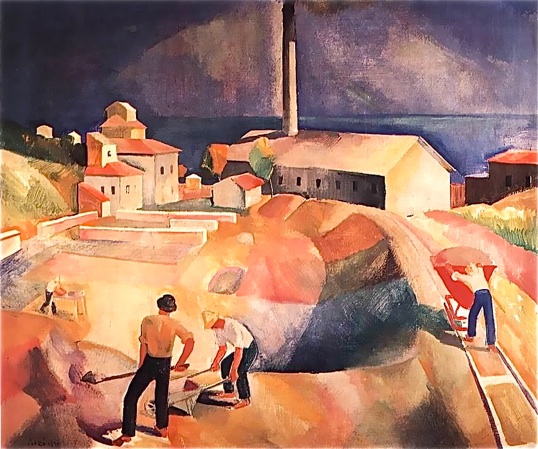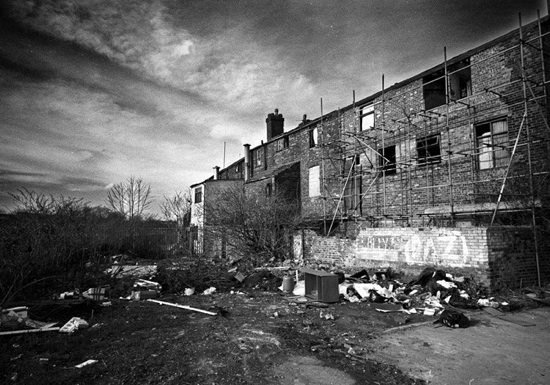From Liebenau to Detroit
Twenty years ago my wife and I visited Poland. Our focus was the area that was Prussia until after WWI.

The first night, we rented a room in a new motel near the village of Liebenau from which my ancestors migrated to Texas in 1856. That night, someone tried to steal our rental vehicle and left it inoperable.
While trying to navigate the antiquated telephone system the next day to get a replacement car, we met Stanley.
Stanley was reared in the area but had migrated to California and was back home for his annual visit. We met him through his cousin, Wanda, who was the cook in the motel and who had called him to tell him that we, the first Americans to stay in the motel, were there.
Stanley became our guide for the next three days and we got to see and learn things and meet Poles rarely enjoyed by individual visitors to a foreign country.

Our visit was just a few years after communism had fallen under its own weight in Poland and throughout Eastern Europe, and new forms of government and private enterprise were emerging. Stanley, for example, was highly critical of what communism had done to his homeland and his people.
He believed that, among other things, living under a government offering to be responsible for everyone from the cradle to the grave had destroyed the work ethic of the country. There was no pride of workmanship and even the simplest of jobs required four or more workers when one could have done the job adequately.
In discussing the loss of the work ethic and the pride of workmanship, he pointed to several things in our motel room. The baseboards in the bathroom did not meet in the corners. One or more had been cut an inch or two short.

Then, pull an extension cord out of a wall socket. The entire socket comes out of the wall, as junction boxes were either unavailable or forgotten. We saw further evidence of that in a fairly new home in which we were visiting. The chandelier in the living room hung from the ceiling on its electric wires. There was no junction box or connection cover.
Stanley also introduced us to a spry octogenarian who was reared in Poland before communism and who had worked for the Germans during the WWII occupation. He had learned to be responsible for his life and had begun a savings plan for his retirement when he began working. He now had a comfortable retirement based on his savings and a government pension.
Later in the evening, we joined some younger men around their Stamntisch (reserved regulars table) in a local eatery. They were commiserating about their circumstances under communism and now without it. They relied on the government’s utopian promise of taking care of them from the cradle to the grave. They had lived from day to day with no thought or plans for the future and were now left to exist on meager pensions.

Finally, we visited the ruins or remnants of the Liebenau brick factory. The unique clays in the Liebenau area when the factory was built under a free enterprise system in the 19th century made Liebenau bricks premier building materials. That clay was depleted by the time the communist government assumed ownership, but the anti-capitalist bureaucrats kept the plant open by importing inferior clays from other regions. As soon as the plant reverted to private ownership with the fall of communism, it could not compete with plants in areas where clay did not have to be imported and ceased operation.
So here’s the perspective.

Hold the picture painted above in front of a mirror. What do you see? The image reflected back could be one of Detroit. The one looming dimly in the background could be Washington, D.C., and the whole nation.
Detroit, once the fourth largest city in the U.S. and the one with the highest per capita income in the nation, is now in bankruptcy with debts it cannot pay. The city was brought to its begging knees by a half century of inefficient, corrupt, and illegal administration and union contracts that promised cradle to grave care.
Remember the Liebenau brick factory? Could it be reflected in Detroit? Although the city is broke, it still maintains a bloated city work force with twice as many municipal employees per capita as comparable cities. It even maintains a farrier or horse shoer on the water and sewer department payroll even though it keeps no horses.
The city’s debt of 18.5 billion dollars is tottering on a rapidly deteriorating tax base. That sounds like the 16 trillion dollar federal debt tottering on tax payers’ pocket books that are becoming very frayed.
Do you now see the images of Detroit and the U.S. reflected in the images of Poland from 20 years ago?
enough





